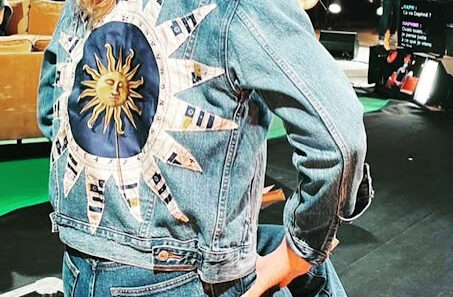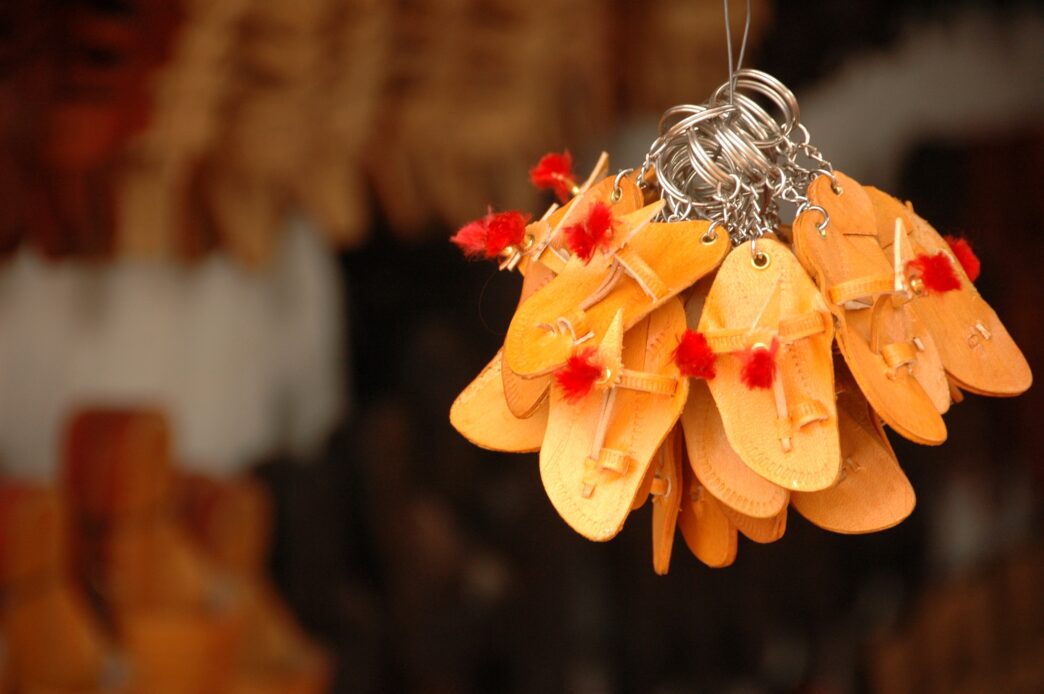(Ganesh S. Hingmire & Ors v. Prada Group & Ors.)
2025 SCCOnLine Bom 2681
For all the wrong reasons, the newly revealed Prada Spring/Summer 2026 collection made news in India. Even while “plagiarism” in the fashion industry is frequent both locally and abroad, this case highlighted a product that has been GI-tagged: the modest Kolhapuri Chappals. Kolhapuri Chappals are traditionally made by hand and have a distinctive toe-loop shape. They may be purchased for as little as Rs. 100 to Rs. 200 per pair at shoe stores throughout India. They are made in the Karnataka districts of Dharwad, Belgaum, Bagalkot, and Bijapur, as well as the Maharashtra districts of Sholapur, Sangli, Kolhapur, and Satara. Under the Geographical Indications of Goods (Registration and Protection) Act, 1999 (“GI Act“), Sant Rohidas Leather Industries & Charmakar Development Corporation (LIDCOM) and Dr. Babu Jagjivan Ram Leather Industries Development Corporation (LIDKAR) obtained GI registration for Kolhapuri Chappals in 2018. The Kolhapuri Chappal GI is currently used by more than 900 authorized users, who use it using traditional methods with leather that has been bag-tanned or vegetable-dyed.
Key Issues:
Maintainability and the Locus Standi:
The first issue was as to the fact that whether a PIL or Public Interest Litigation can be maintained for the alleged infringement of the Kolhapuri GI (Geographical Indication). It was held by the Hon’ble court that only authorised and registered proprietors under the Geographical Indications of Goods (Registration and Protection) Act of 1999 have the locus standi to bring such claims. It sparked the procedural question as to who can speak for the Traditional communities when it comes to IP disputes.

The Alleged GI Misuse:
The Petitioners alleged that Pradas’ “Kolhapuri-inspired” sandals had stark similarity to the distinctive designs of the chappal – the toe ring, the leather finish and strap architecture – which was amounting to the misuse of GI and culture exploitation. It must also be noted, however, that the Court did not examine the merits of similarity since the matter was dismissed on grounds of maintainability. The case nonetheless had an unresolved question: “ Can a design imitation of a GI-protected craft, without using its name, be considered an infringement or unfair competition?”
Jurisdiction and Extraterritorial Application:
A key legal issue was whether Indian courts had jurisdiction over a foreign brand that displayed the allegedly infringing design (in Milan) outside of India. The Court did not address this substantively, but had suggested that GI protection is territorial, thereby any infringement action had to be tied to use or sale in India. This raises the issue of international enforcement of Indian GIs available through reciprocal enforcement or cooperation with WIPO.
Cultural Appropriation and Protection of Traditional Knowledge:
The petitioners characterized the actions of Prada as an appropriation of culture, an exploitation of India’s artisanal heritage for commercial gain without acknowledgement or benefit-sharing.
The Court accepted this perception but stated that there is no current statutory protection under Indian law that expressly gives protection to cultural appropriation, outside of GI or copyright law. This illustrates a gap in IP protections in India- intangible heritage, motifs, and traditional craftsmanship are often unprotected by statute.
Broader Policy Questions:
The situation brought forth larger policy questions:
- What ways exist to enable artisan cooperatives to fairly enforce GI rights?
- Should the pool of cultural representation be extended beyond statutory GI holders?
- Does the Indian IP regime need to change to recognize moral and cultural rights like “Cultural IP?”

Who Owns Tradition?
The Prada-Kolhapuri dispute brought to the fore a larger issue that extends far beyond the walls of the Bombay High Court: In a globalized world where heritage can be redesigned, rebranded, and sold, who owns tradition? This case was not just a matter of footwear — it is a blend of culture, commerce, and control. The Kolhapuri chappal has been hand-crafted for generations by local artisans in Maharashtra and Karnataka. The Kolhapuri transcends geography – every pair embodies the memory of a community, an ancestry of design, and an ecosystem of livelihood. When a global fashion giant like Prada presented a sandal that was, at best, a poor imitation of the Kolhapuri, the debate changed from one of artistry to one of authenticity — who gets to represent, monetize, and even define that which is “Kolhapuri?”
The Bombay High Court’s rejection of a Public Interest Litigation submitted by social activist Ganesh Hingmire was, on the face of it, a technical ruling. The court ruled that only registered proprietors or authorized users of a Geographical Indication (GI), under the Geographical Indications of Goods (Registration and Protection) Act, 1999, could bring an infringement claim. Although the petitioners were acting in the spirit of cultural custodianship, they had no standing. However, the legal formality revealed a larger rift between cultural ownership in spirit and ownership in law. Although tradition belongs, in some sense, to the collective makers, the law only recognizes it upon bureaucratic registration. The community that has lived the tradition now, paradoxically, has no standing to defend it unless it has formalized its claim in writing.
The discord between the cultural right and legal right illustrates a momentous tension on the global stage. From Canada to Japan, indigenous and traditional communities are working to protect their cultural expressions from appropriation by large corporations. Particularly, in the United States, the Navajo Nation v. Urban Outfitters case resulted from allegations that the retailer sold accessories and clothing with the term “Navajo” in their descriptions. The Navajo Nation, a federally recognised entity, brought a lawsuit for trademark infringement and dilution, claiming that their cultural identity is not a fashion trend, but rather a protected heritage. Although the case settled privately, it generated essential discussions around the ethics of branding and the duty of fashion houses to honour cultural identities.
In a similar vein, the Maasai Intellectual Property Initiative in Africa sought to reclaim economic power over the terminology “Maasai,” which had been used without consent or payment from over one thousand companies globally. In contrast to India’s GI model, the Maasai initiative operates more like community-centric cultural IP by asserting both moral and economic rights. These movements hint that there is an awareness that culture cannot be protected simply by registering a product, but that these rights require participatory frameworks to return agency to the original custodians.
The inquiry into “Who has ownership over tradition?” has no straightforward answer, and in the case above, the ownership is likely to head in a different direction altogether. While ideally, ownership should not mean exclusive ownership but custodianship, a shared responsibility of artisanship, regulators, and corporations to maintain authenticity while also maintaining a cultural exchange, global brands bearing a specific aesthetic should be acting with ethical collaboration instead of passive appropriation towards artisans and potentially unethical exploitation, treating artisans, not as a source of inspiration or inspiration for inspiration, but as collaborative ethno-designers. At the same time, the Indian legal framework should shift from a regime of procedural rigidity to a community-oriented IP structure that prioritises heritage as a living right.
Although the outcome of the Prada-Kolhapuri case may not have reached a definitive conclusion on infringement, it at least successfully reinvigorated discussions on cultural justice. In a world where the production of fashion outpaces the crafts it borrows from, reimagining the way law protects tradition is not merely a policy issue; it is about cultural dignity. Until law awakens to the language of the artisan, tradition will remain a shared ownership without protection.
Resham Jha

Resham is a recent law graduate, currently pursuing her postgraduate studies in Intellectual Property Law at the Indian Law Institute, New Delhi. She’s very passionate about IP laws and protecting the rights of artists, as well as copyright/trademark litigation. She loves baking/discovering new cafés and excellent coffees/ staying relevant with the times (legally and being chronically online)


















